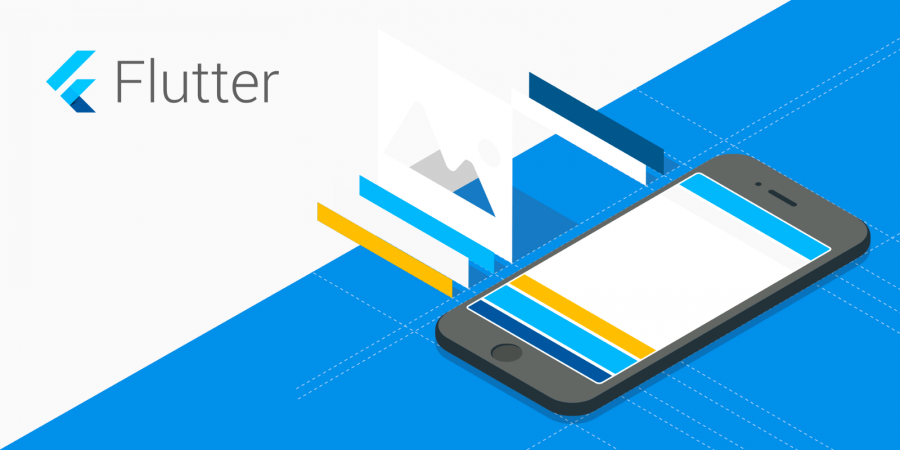Flutter is a software development kit launched by Google. Today, Flutter development is not a widely-used toolkit; still the cases are impressive. For example, Google AdWords and Ali Express apps are built with its help. Numerous tools and widgets of Flutter allow professionals to create easy-to-use and great-looking applications that work for both systems – iOS and Android. The fact that Flutter apps are cross-platform is particularly topical for developers – a single base allows them to build one product for all mobile devices. This is a time-saving opportunity nobody wants to miss. Besides, this kit is open-source and free to use. In this article, we will discuss some core benefits of Flutter to let you decide whether you need it for your coding or not.
One code for 2 platforms
Talking about benefits if Flutter, one should start with the fact that it is a cross-platform framework. This means that developers don’t have to create two separate applications for Android and iOS. You build it once and then use the same codebase for both products.
If you have ever heard of Fuchsia, a new Google’s OS under development, then be ready that Flutter will give you a chance to develop for this platform as well. Fuchsia may become a new Android, so you should consider this perspective.
Open-source project
The beauty of open-source projects is that they allow everyone to take a look at the initial code. What is more, developers can work with this code and do everything they want on its basis. One can download and use it for any number of devices. The products created with the help of an open-source project can be distributed under free licenses and you don’t need additional same day paper documents or agreements. Flutter is precisely this kind of project.
As a developer, you can use Flutter’s code to create your own applications or make contributions that would improve Flutter itself. This is a free and pretty advanced programming practice. Your resume can be filled up with such projects and, believe us, this is much better than graduating some online courses.
Amazing widgets

No application can look and feel well without widgets. To make an app work properly, widgets must be fast, customizable, and convenient. Not only widgets are used for the view, but an entire application. Widgets make apps more user-friendly and make them work appropriately despite the screen size. Users might want to use the same site on a mobile device. So when they enter “custom sign in” the login page must look and feel the way it looks and feels on the larger screen. In the opposite case, no user will actually stay at your website for long.
Flutter framework is widget-oriented. It provides a lot of amazing widgets with extensive functionality. Using the basic set of widgets, you can change them to create customized ones. Most software kits divide view properties into categories, offering separate controllers and layouts. Flutter has a single widget model that can define:
- Layout aspects
- Style
- Structure
There is a so-called root widget responsible for the functions of smaller ones. Due to this hierarchy, widgets function as a single organism. A framework uses a platform as a background where the widgets are represented. They will appear on the user’s screen and ally with actions (tapping, timer, and more) and functions (camera, maps, etc.).
Faster app testing
It is hard to leave a Flutter review without mentioning that this framework allows less testing. This is one of the benefits connected with the cross-platform format of the framework. When you have a single codebase, it means that writing an automatic test once is enough. QA experts have only one application to test, which is time-saving. However, there is no need to highlight that if the Android and iOS versions have differences, then testing on two platforms is essential.
The same app UI on older devices
Not only Flutter allows you to create apps for different platforms. There is another feature that makes this framework “one-size-fits-all.” Applications built with Flutter work and look the same on various versions of Android and iOS platforms. This means that the old versions are supported as well. Developers don’t have to worry that their product won’t work correctly on older devices. Flutter apps work on Android Jelly Bean and iOS 8 perfectly. What is more, you don’t have to pay a cent for this function. So you save both – time and money.
Continuous integration support
Even though Flutter is a relatively new app and some libraries are still missing, it has an official Google support. Their official website (flutter.io) is owned by the largest corporation in the world, so fantastic support from thousands of professional developers is guaranteed. As all of them are interested in the progress and growth of the framework, they are always ready and willing to assist. You can count their advice and fast response. This might be another chance for you to improve your coding skills and fill the gaps in your knowledge.
Conclusion
Cross-platform development is the future of programming, and Google knows this. Using frameworks like Flutter, one can create apps that will work and look equally great on both systems – iOS and Android. With this toolkit, developers have more opportunities to build high-quality apps faster. There is no need to choose between speed and quality when your app fits both major platforms. Flutter is focused on numerous widgets that allow to create customized visual elements and improve performance. Also, apps built with Flutter are supported with new and old versions of iOS and Android systems, which is another time-saving factor.
We believe that Flutter has a lot of benefits for development teams. With this toolkit, one can create really nice original apps that feel and look awesome. If you want to develop apps that cover both mobile platforms, then you should consider Flutter as an option.
Author’s Bio:
Jeff Blaylock is a professional writer with a technical background. His interest in programming languages emerged from his passion for math and engineering. Currently, he feels excited about the speedy progress of the programming sphere and wants to keep up with the latest trends. Jeff perceives writing as a chance to share his ideas and knowledge with the audience.






 Your total news and information resource for all things Science, Technology, Engineering / Mathematics, Art, and Medicine / Health.
Your total news and information resource for all things Science, Technology, Engineering / Mathematics, Art, and Medicine / Health.
Leave a Comment